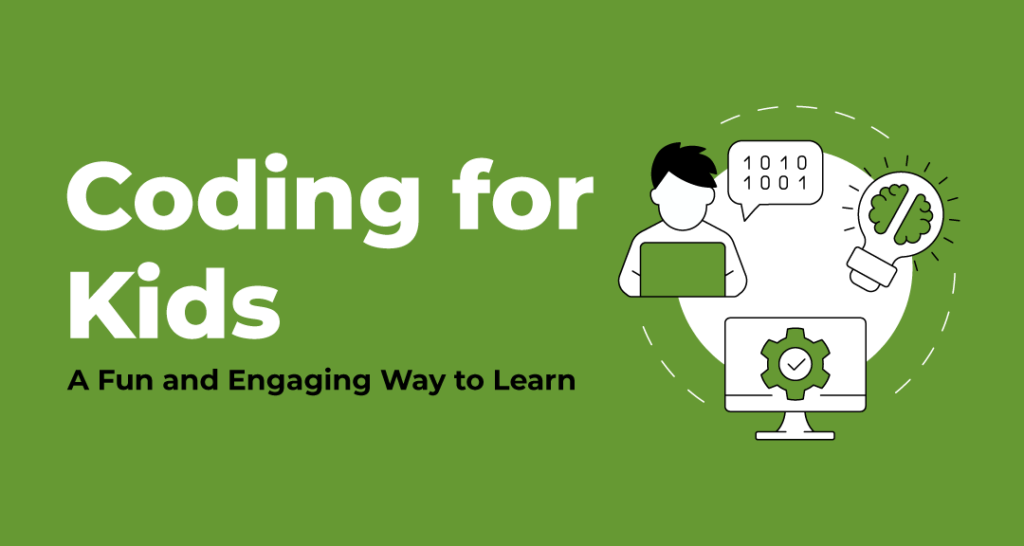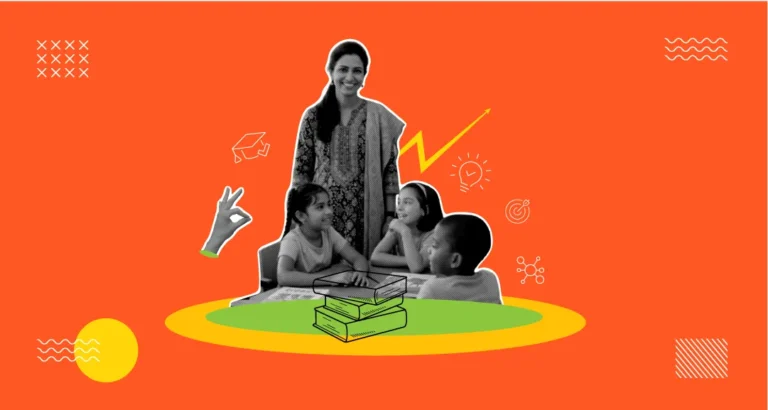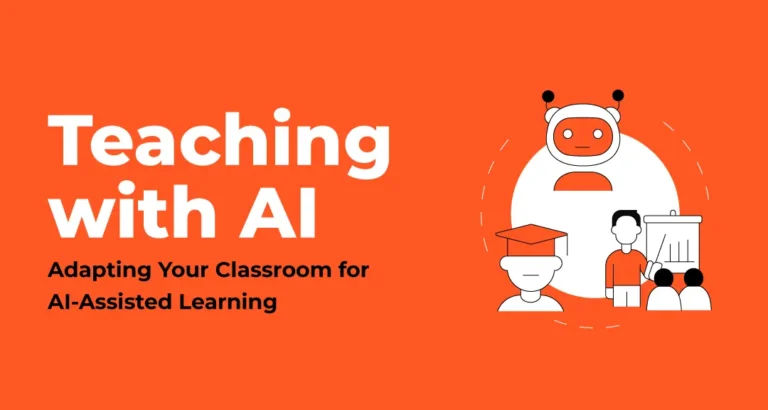Coding for Kids: A Fun and Engaging Way to Learn
- School Leaders, Teaching
- January 11, 2025
- VOLT Learning

Why teach coding to kids? They are too young for that—such questions often pop up. Coding is a universal language, like English, that opens a Pandora’s box of growth opportunities in today’s technology-driven world. Encouraging kids to learn coding early can be a good head start on their cognitive development, technical proficiency, and problem-solving capabilities.
Picture a scenario where many young children enthusiastically make animated stories, games, or simple applications. This might sound like an unrealistic dream, but teaching beginner coding concepts has become a new normal in today’s digitally enchanted age.
No wonder schools nowadays treat coding for kids as a valuable extracurricular skill that gives technology-driven educational exposure to children. It also cultivates a creative and logical thinking mindset at a pre-primary level.
Like reading and writing, coding for beginners serves as knowledge-building bricks helping students with modernised computer skills, rational reasoning, and a sense of innovation. Interestingly, coding is no longer exclusive to the “techie” child but for all curious children seeking to explore a universe of fun in meaningful ways, all within digital space.
Let’s dig deeper into this new trend, i.e., the ABCs of modern education, and understand why teaching kids coding early has become the need of the hour for forward-thinking parents.
Why Should Coding for Kids Become an Essential Part of the Classroom?
When you say “teach kids coding,” it sounds pretty strenuous on the screen with too many code lines staring at them. Coding for kids is a spark of curiosity, creativity, nurturing, and providing kids with a skill set that will last their lives. When introduced inside the classroom walls, it can change the skill-based educational game for kids by:
- Encouraging problem-solving skills: Coding is essentially a puzzle enabling kids to identify the problem at hand and then indulge in logical thinking to break up challenges into more minor elements. It further encourages young minds to analyse the cause and consequence of each assignment, making them more proactive towards applying abstract concepts to define an outcome, explore possible solutions and learn from failures efficiently.
- Unlocking creativity: Coding is an essential element of computer science that equips students with creative thinking skills. It stimulates their ability to think differently, detect incorrect moves, fix bugs, and learn from failure – this way, coding pushes their creative side out. It lets them concentrate on turning their ideas into realistic output. Throughout the process, the children develop non-cognitive abilities when they are pushed out of their comfortable cocoon and have to figure out how to fix the problem.
- Building resilience: Let’s be honest—coding involves debugging, which can be frustrating. However, code debugging promotes resilience through higher-order thinking and persistence when solving challenges. Coding lets kids test their knowledge against known computer science concepts whenever failure hits them hard under specific circumstances. Additionally, this practice develops a sharp eye for catching errors early in kids and a steep learning curve toward high mental performance.
- Preparing for a bright future: Technology is everywhere, and the job market will be totally tech-driven in the future. Introducing coding to kids adds an edge to their overall development curve. It further makes them highly competitive individuals in any setting while increasing neural efficiency in problem-solving tasks.
- Promoting teamwork and collaborative harmony: Many coding projects require collaboration. So, when kids are engaged in group coding projects where they have to work together, share ideas in a way that others understand, and appreciate other people’s views, they learn the most critical skills, namely collaboration and teamwork, which they will use outside the classroom.
Making Coding for Beginners Fun and Engaging Inside the Classroom: Practical Tips for Teachers

Teaching programming to kids might be a tall order, but in the right ways, it will be an absolute blast for everyone involved. Below are some practical and creative suggestions on how coding lessons can quickly become a success in your class:
- Start small: Teachers can start small when introducing coding concepts to children aged 5 to 7 and capture their attention. Begin with warm-up activities like introducing them to computer basics, such as types of devices and their uses. Then, engage kids in brain teaser activities using stimulating elements and encourage practical “observe and answer” activities or “create and learn” to teach coding concepts.
- Turn coding into a fun game: Engage students in drag-and-drop command environments so that they can easily create something interesting in the form of stories or animations. Also, teachers can leverage colourful blocks, shapes, or stickers acting as coding commands and teach students about abstract concepts in a more tangible and fun way.
- Blend coding with storytelling: We all know children love stories, and coding lets them write their own literally. Teachers can organise narrative-based challenges inside the classroom where kids engage in imaginary code characters that solve problems. The beautiful combination of storytelling and coding will elevate their imagination and grab their attention.
- Incorporate real-world applications: Show kids how coding can be applied to their everyday lives by letting them create simple apps, design a mini website, or build a robot using kid-friendly programming platforms. This will create a more meaningful and encouraging environment for kids learning coding, as they will witness how codes can be used to solve everyday problems.
- Celebrate every success: Little wins exist when kids are exposed to beginner-level coding concepts. This can be as simple as computational skills, mathematical thinking, teamwork, decision-making and resilience through debugging. It is always a good gesture for children when teachers (and parents) celebrate their success. Appreciation always fuels their epitome of self-confidence and keeps children motivated by creating a positive environment.
Computer Science Books for Kids: a Path Towards Bright Future Powered by Code
Throughout the journey of introducing coding to beginners, the focus should not be only on preparing the children for careers in tech. When kids learn to code, they develop many valuable capabilities, including critical thinking, cognitive development, problem-solving, logical reasoning, self-independency, and flexibility. Learning coding lessons is undoubtedly an art that educates children about persistence, patience, and acceptance towards failure.
VOLT Computer Science series can be an ultimate companion for educators looking forward to unveiling the magical world of coding to their students. Specifically designed for classes 1 through 8, these computer science school books are the most updated digital resources covering everything from computer basics to complex topics like networking, data representation, Adobe Photoshop, Cloud Computing, and Artificial Intelligence.
Interestingly, the VOLT computer science series is the best choice for the best computer books for kids because it makes coding great fun by incorporating Scratch and Python chapters. This way, the books equip students of 5-7 ages with the ability to code and create their own fun animations, games and stories. With VOLT Learning, teachers not only educate young kids how to code; but also inspire future dreamers.



